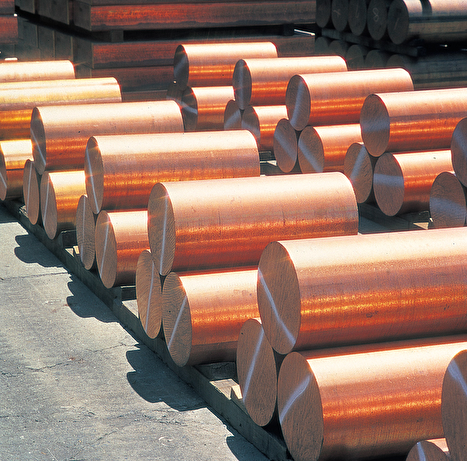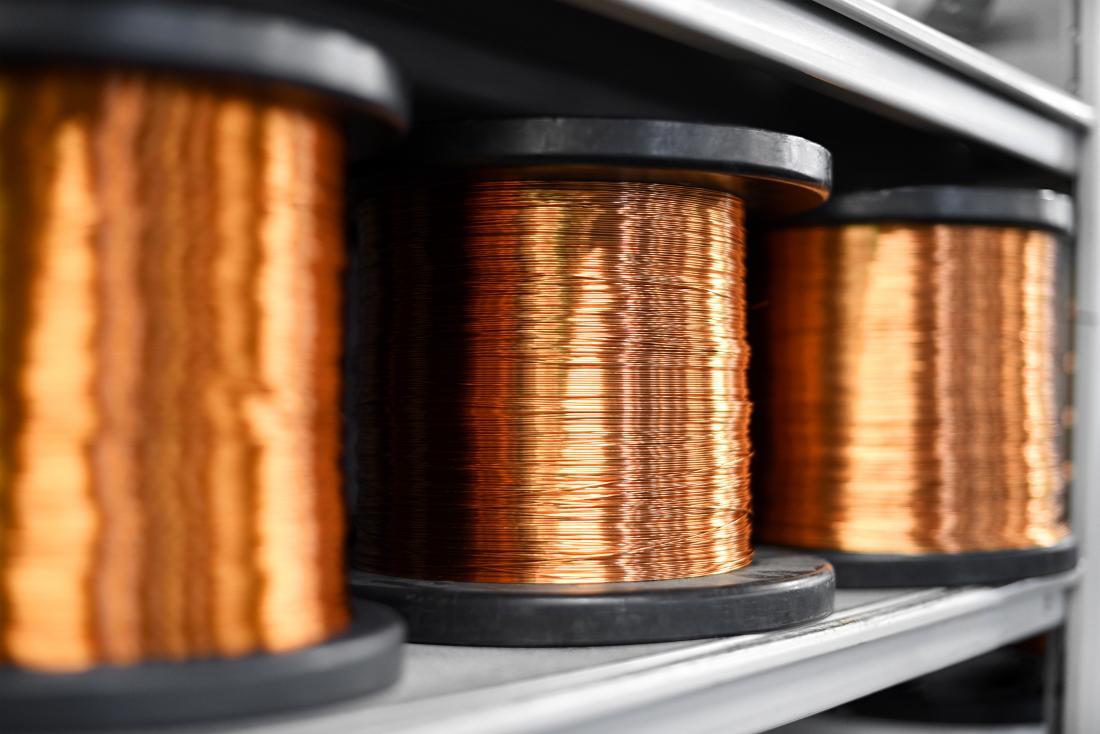Raise Your Workmanship with High-Performance Copper Products for Artisans
Raise Your Workmanship with High-Performance Copper Products for Artisans
Blog Article
How Copper Products Add To Lasting Practices in Different Markets
In renewable power systems, for example, copper improves the performance of solar and wind modern technologies, while its application in building and construction reduces waste with long life. As industries seek to take on even more sustainable techniques, the role of copper could verify pivotal in accomplishing ecological objectives.
Copper in Renewable Resource
Copper plays an important function in the innovation of renewable resource innovations, acting as a vital conductor in various applications. Its exceptional electric conductivity and resistance to corrosion make it an optimal material for electrical wiring, which is necessary in solar panels, wind generators, and power storage systems. In solar photovoltaic systems, copper is used in the interconnections and wiring, enabling effective power conversion from sunshine to electrical energy.
In wind power, copper is important to the generators and transformers that transform kinetic power right into electrical energy, making certain optimal performance and integrity. In addition, the demand for electric cars (EVs) is enhancing, with copper being an essential component in batteries, electric motors, and charging facilities. The change to EVs dramatically boosts the demand for copper, as these lorries typically utilize 4 times extra copper than traditional inner burning engine cars.
As the world looks for to alleviate environment modification and transition to sustainable power resources, copper's function becomes significantly critical. The material not just improves the effectiveness and longevity of renewable energy systems yet likewise sustains the broader objective of minimizing greenhouse gas discharges and advertising a lasting future.
Eco-Friendly Construction Materials
In the last few years, there has been a notable change towards the fostering of environment-friendly building and construction products in response to expanding environmental worries. This modification is motivated by the requirement for sustainable alternatives that decrease ecological footprints while maintaining structural honesty and aesthetic charm.
Copper, recognized for its sturdiness and recyclability, has emerged as a key player in this sector. It can be used in roof covering, plumbing, and electrical systems, adding to energy efficiency and decreasing waste. Copper's long life implies fewer substitutes with time, further improving its sustainability profile.
In addition, materials such as bamboo, recovered wood, and recycled steel are acquiring appeal. These options not just offer lowered ecological impact but also promote source preservation. As building codes progressively stress sustainability, builders and engineers are incorporating these products into their projects, fostering technology in design.
The raising adoption of environment-friendly building materials reflects a wider commitment to sustainability in the constructed atmosphere. By focusing on these materials, the building industry can dramatically decrease its carbon impact, line up with regulative standards, and support a healthier ecological community for future generations. This fad marks a critical step towards a more sustainable future in building.
Copper's Function in Health care
Current research studies have highlighted the significant function of copper in healthcare setups, specifically as a result of its antimicrobial residential properties. Copper surface areas have actually been revealed to minimize the existence of microorganisms, including viruses and germs, by approximately 99.9% within a short duration. This remarkable efficacy makes copper an invaluable product for high-touch surface areas in hospitals, such as doorknobs, bed rails, and IV poles, consequently adding to improved infection control steps.
In enhancement to its straight antimicrobial impacts, copper also contributes in the more comprehensive context of healthcare facility sustainability (Copper Products). By including copper right into clinical equipment and furnishings, healthcare facilities can reduce the incidence of healthcare-associated infections (HAIs), which not only enhances patient end results however likewise reduces the expenses connected with extended health center keeps and added therapies
Furthermore, copper's longevity and recyclability align with lasting practices, allowing for liable resource monitoring. As health care systems progressively focus on both client safety and security and environmental stewardship, the integration of copper products is becoming more prevalent. This dual benefit highlights copper's important contribution to a healthier, more secure, and more sustainable medical care setting.
Sustainability in Transport

Furthermore, copper's toughness and deterioration resistance add to the durability of transportation infrastructure (Copper Products). In rail systems, for example, copper components boost the integrity and efficiency of signaling and power systems, vital for reducing delays and energy intake. In addition, copper's duty in sustainable power systems, such as solar and wind, supports sustainable transportation services by providing tidy energy for electrical transportation options
Investments in copper modern technology not only foster sustainability but additionally boost financial development and task creation in green industries. As sectors strive to satisfy strict environmental policies, the application of copper products in transport becomes an essential technique in achieving sustainability objectives and advertising a cleaner, a lot more reliable future.
Copper and Circular Economy
As the world increasingly accepts sustainability, the function of copper in the round economy becomes ever a lot more considerable. Copper's intrinsic properties-- such as its conductivity, toughness, and recyclability-- position it as a crucial product in a resource-efficient economic climate. The round economic situation aims to minimize waste and make the most of source use through recycling and reusing products, and copper master this regard.
The metal can be recycled indefinitely without loss of high quality, making it a perfect candidate for lasting practices across different fields, including building and construction, electronic devices, and renewable resource. By recycling and recuperating copper from end-of-life products, markets can dramatically reduce the need for virgin products, thereby lowering ecological effects linked with mining and processing.
Additionally, the combination of copper into circular economy frameworks not only preserves sources however likewise cultivates technology. Businesses that focus on copper reusing add to a more sustainable supply chain, boosting their competition while aligning with governing demands and customer preferences for environmentally accountable items.
Verdict
To conclude, copper items significantly add to lasting methods throughout several fields. Their crucial role in enhancing sustainable energy technologies, advertising green building and construction products, sustaining infection control in healthcare, facilitating sustainable transportation, and embodying the principles of a circular economy highlights the adaptability and relevance of copper. By incorporating copper into various applications, markets can accomplish better efficiency, lower environmental effect, and align with global sustainability goals, ultimately Source promoting an extra sustainable future.

Copper's exceptional conductivity makes it a recommended material in electric car (EV) systems, enhancing energy performance and efficiency. Furthermore, copper's function in renewable energy systems, such as solar and wind, supports sustainable transport remedies by providing tidy energy for electrical transportation options.
Their vital role in enhancing sustainable power innovations, advertising green building products, supporting infection control in medical care, helping with sustainable transport, and symbolizing the principles of a circular economic climate underscores the versatility and value of copper.
Report this page